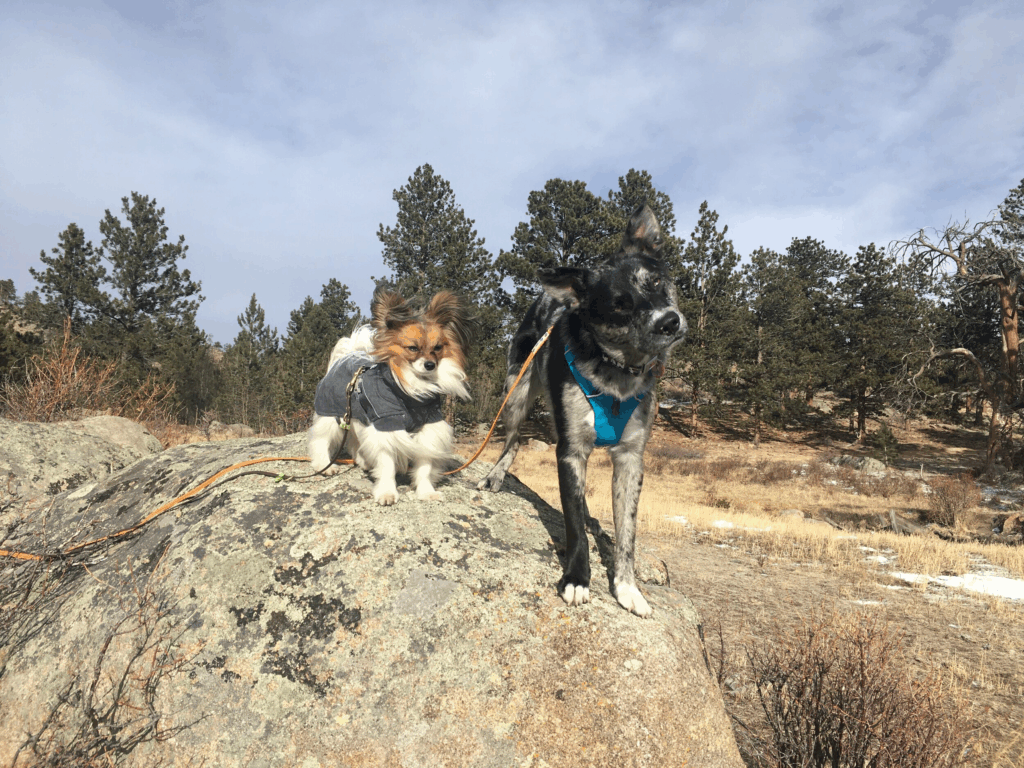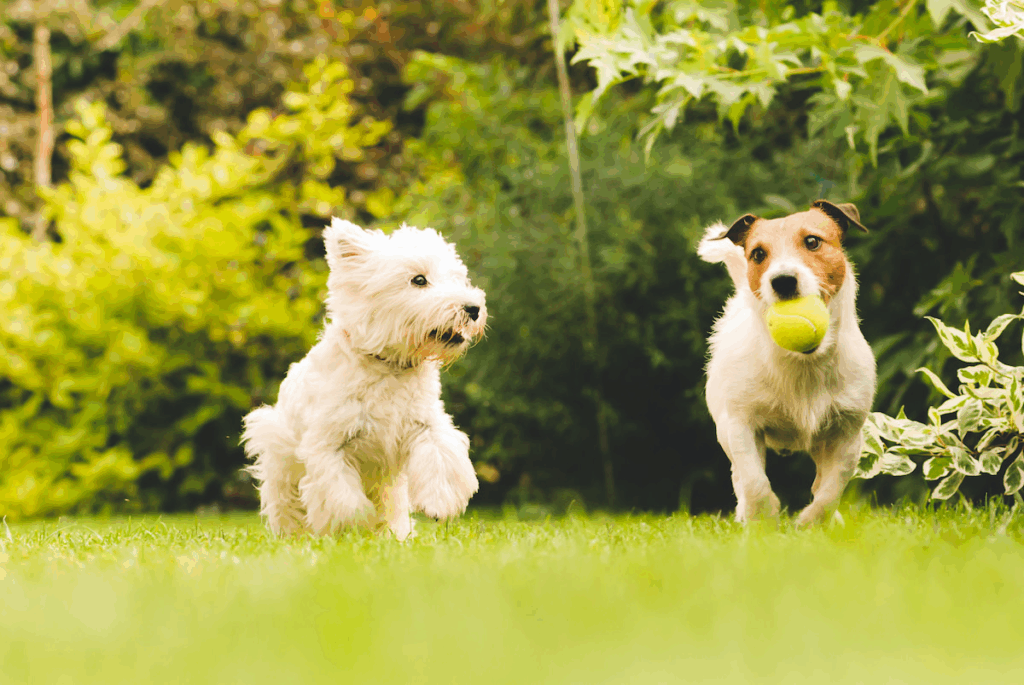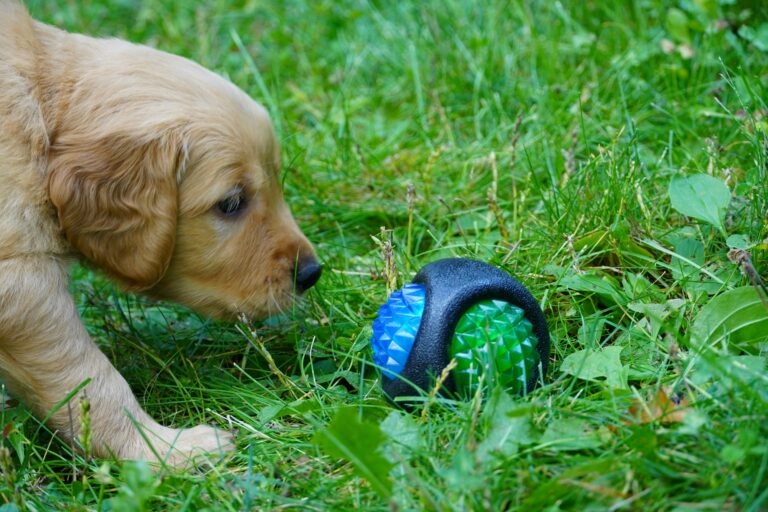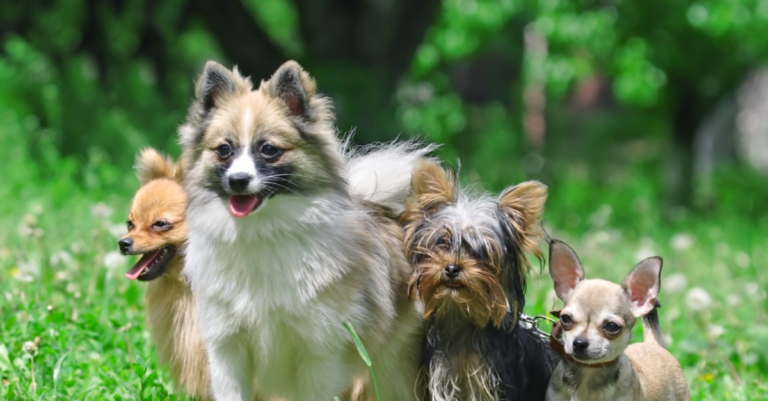Navigating the world of canine companionship can sometimes feel like a walk in a very complex park. Especially when you’re planning to introduce a small dog to a larger one, the dynamics may seem a little daunting. Yet, with the right knowledge, it can turn into a rewarding experience for both dogs. In this post, we’ll explore effective ways to introduce small dogs to their larger counterparts for a fun and friendly socialization process.

The fear of a possible David-and-Goliath situation often holds back pet owners from introducing their smaller dogs to larger ones. However, it’s important to remember that with the right approach, these interactions can be beneficial for both dogs. The subsequent sections of this post will provide insights and practical tips to make the introduction process smooth, and to ensure that it fosters a positive relationship between the two canines.
Expect to discover the importance of understanding canine body language and why it’s crucial in these interactions. You’ll also learn about the role of neutral spaces and controlled environments, and how they can be a game-changer in breaking the ice between small and large dogs. Additionally, we’ll delve into the benefits of gradual exposure and supervised play dates. So stay tuned for an informative read that might just reshape your small dog’s social life! 🐾🐶🐕🦺
The Psychological Factors Behind Dog Socialization
Socialization is not just a matter of behavior—there are deep psychological mechanisms at play. Dogs are highly social animals with innate pack instincts. In the wild, pack dynamics are essential for survival and involve clear social hierarchies, cooperative behavior, and non-verbal communication. Domestic dogs retain these instincts, and their ability to socialize hinges on how well they can adapt to their environment and read social cues.
For small dogs, the social landscape can be intimidating, particularly when interacting with much larger dogs. Their fear response might be more pronounced due to size disparity. This is a natural defense mechanism that kicks in to protect themselves from perceived threats. However, if not managed correctly, this fear can lead to defensive aggression or social withdrawal.
Larger dogs, while generally not intending harm, may come off as overwhelming simply because of their physical size and energy. Recognizing these psychological undercurrents helps pet owners guide interactions in a more informed and empathetic way.
The Role of Early Experiences in Social Behavior
A dog’s early social experiences—especially those within the critical socialization window (3 to 14 weeks of age)—can have a lasting impact on how they interact with other animals throughout their lives. Dogs who are exposed to various sights, sounds, people, and dogs during this period are more likely to develop confidence and social ease.
For small dogs that missed this early exposure or experienced trauma, patience and consistent positive exposure are key to building social comfort. In contrast, large dogs that grew up in a single-dog household might need structured opportunities to learn appropriate interaction with smaller companions.
Structured puppy classes, doggy daycares, and controlled playgroups can serve as valuable resources to nurture positive behaviors from an early age.
Preparing Your Dogs Before the First Meeting
Before even attempting an introduction, it’s essential to prepare both dogs individually. Ensure both dogs are up to date on vaccinations, have been exercised to expend excess energy, and are not hungry or overstimulated.
For small dogs, you might consider introducing a safety command like “place” or “come” to provide them with a retreat cue. For larger dogs, brushing up on obedience commands such as “leave it,” “sit,” and “gentle” can provide additional control during introductions.
Each dog should be calm and responsive to basic commands before a meeting. Hyper, nervous, or overly excited dogs are more prone to reactive behavior, which can derail the introduction.
Understanding the Significance of Scent
Dogs communicate extensively through scent. Before allowing face-to-face interaction, giving both dogs the opportunity to smell each other’s bedding, toys, or blankets can help ease the transition. Scent familiarization creates a foundation of recognition, allowing the dogs to feel more secure when they eventually meet.
Scent swapping can be done days in advance, and you might even walk them near each other without direct contact to build familiarity. Letting them sniff one another through a safe barrier (like a fence or crate) can also help with desensitization and reduce fear responses.
Neutral Ground Is Key
The choice of meeting location can significantly affect the outcome of the introduction. A neutral ground, where neither dog has established territory, reduces the chance of resource guarding or territorial aggression.
Choose an open space where both dogs can move freely without being cornered—avoid confined areas like hallways or small backyards. Large parks, quiet beaches, or even the parking lot of a pet-friendly store can serve as neutral meeting grounds.
Try to schedule the first meeting at a time of day when the environment is less crowded or noisy, avoiding potential stressors or distractions.
Side-by-Side Walking: A Proven Introduction Method
One effective method for introducing dogs is parallel walking. Begin with both dogs on leashes, walking side by side at a safe distance. This allows them to become accustomed to each other’s presence without the pressure of direct interaction.
As they grow more comfortable, gradually reduce the distance between them. Watch for signs of relaxed behavior such as soft eye contact, wagging tails, or relaxed body posture. Avoid letting them face each other directly during the initial walk, as this can be perceived as confrontational.
The walk not only helps desensitize the dogs to each other but also creates a sense of camaraderie as they share a calm, structured activity.
Managing Size Disparities in Play
Even after a successful introduction, it’s crucial to manage play based on size differences. Large dogs often play using their weight, paws, and rougher movements, which may be overwhelming or even harmful to a smaller dog. Conversely, small dogs might compensate with more bark or nip-based play, which could irritate or confuse a larger dog.
To prevent mismatches in energy and play style, encourage breaks during playtime. Use redirection (like tossing a toy or calling them to you) if play becomes too intense. Always supervise interactions closely until you’re confident that both dogs understand each other’s boundaries.
You can also designate specific toys for joint play and separate toys for independent use, reducing the chance of resource guarding or toy-based tension.
Correcting and Redirecting Behavior Gently
During initial interactions, if one dog begins to exhibit undesirable behavior—such as mounting, growling, or snapping—it’s important to step in calmly and confidently. Avoid shouting or using punishment, which can escalate tension. Instead, redirect their attention with a treat or command.
For example, if a larger dog begins to overwhelm the smaller one, you can call the larger dog away using a treat or a favorite toy. Once both dogs are calm, you can resume the interaction.
Reinforce positive behavior consistently. Praise and reward when the dogs show polite sniffing, gentle play, or even simply ignoring each other without issue.
Building Confidence in Small Dogs
Many small dogs develop “small dog syndrome,” a behavior characterized by excessive barking, nipping, or defensiveness, often due to fear or lack of exposure. To build confidence, provide safe opportunities for your small dog to observe and interact with larger dogs at their own pace.

You can begin with distance-based exposure—watching larger dogs from afar, then slowly progressing to short, supervised meetings with calm, friendly large dogs. Always ensure that your small dog has an escape route or a perch if needed. Giving them choice and control over interactions builds trust and reduces anxiety.
Use high-value rewards like small treats, verbal praise, or gentle petting during and after positive interactions to reinforce confidence.
Long-Term Strategies for Sustained Social Success
Establishing a healthy relationship between dogs of different sizes isn’t a one-time event—it requires ongoing effort. Schedule regular social sessions, maintain consistent training, and continue using positive reinforcement strategies.
Consider enrolling both dogs in obedience classes or group training sessions. These structured environments promote discipline and create more shared experiences that deepen their bond.
When appropriate, you might even consider doggy daycare or controlled dog parks with separate play areas for small and large dogs, allowing continued exposure in a safe setting.
Creating a predictable routine—such as daily walks together, shared rest time, and synchronized feeding schedules—can foster a strong, stable dynamic between the dogs.
When to Seek Professional Help
Sometimes, despite all efforts, the dynamic between a small dog and a larger one may remain strained. This can result from past trauma, conflicting temperaments, or insufficient early socialization. In such cases, seeking help from a certified dog behaviorist or professional trainer is a wise decision.
A professional can assess the dogs’ individual behaviors, offer personalized strategies, and mediate introductions in a controlled environment. Early intervention prevents problems from escalating and increases the chances of long-term harmony.
Observing Body Language
One of the critical aspects of successful dog socialization is understanding and observing canine body language. Dogs communicate largely through body language, and understanding these signals can provide valuable insights into their comfort levels.
Signs of Comfort
Signs of comfort in dogs include relaxed body posture, wagging tail, and playful gestures like the ‘play bow.’ When both dogs exhibit these signs, it usually indicates they are comfortable and ready to interact more closely.
Signs of Discomfort
On the other hand, signs of discomfort or stress include a stiff body, flattened ears, tail tucked under the body, growling, or showing teeth. If any of these signs are observed, it’s advisable to separate the dogs and try again at a later time.
Reinforcing Positive Interactions
Reinforcing positive interactions is another essential step in introducing small dogs to larger canine companions. This can be done by using treats, praises, or other positive reinforcement techniques whenever the dogs display appropriate behavior towards each other.
Consistency is Key
Consistency is key in reinforcing positive interactions. It’s crucial to be consistent in rewarding positive behavior and discouraging negative behavior to help the dogs understand what is expected of them.
Continuing Socialization
Once the dogs have been successfully introduced and are comfortable around each other, it’s essential to continue socialization. This could include regular play dates, walks together, or even cohabitation if possible. Continued socialization allows the dogs to build a strong, positive relationship and reduce the likelihood of future conflict.
Challenges and Solutions
Despite your best efforts, introducing small dogs to larger canine companions may not always go smoothly. Various challenges may arise, such as aggression, fear, or dominance issues. In such cases, professional help from a canine behaviorist or trainer may be needed to address these issues effectively.
Final Thoughts
In summary, introducing small dogs to larger canine companions can indeed be a delightful and rewarding experience if handled with the right approach. Encouraging interactions between dogs of different sizes can pave the way for lasting friendships, fostering an environment of healthy socialization and companionship. A gradual introduction, positive reinforcement, and creating a controlled environment are key strategies to make this process smooth and stress-free.
Nevertheless, it’s essential to always prioritize safety, considering the distinct physical attributes and temperament of each dog. Every dog has unique traits and needs, hence the importance of understanding and respecting their individual boundaries. Creating positive associations with this experience is crucial, as it can shape the way they perceive other dogs in the future.
With patience, consistency, and positive experiences, small dogs can learn to interact with their larger counterparts in a fun and friendly way. It’s a dynamic process that requires continuous learning, adjustment, and understanding. Indeed, mixing it up between large and small dogs can result in an enriched environment that can contribute significantly to their overall well-being.
Finally, remember, it’s not the size of the dog in the fight, it’s the size of the fight in the dog! 🐾
When done thoughtfully, these introductions can also help challenge negative stereotypes about certain breeds or sizes. Over time, small and large dogs that bond successfully may even serve as great role models for others, promoting a more inclusive, balanced canine social circle. With the right guidance, every pup—no matter the size—can find a friend. 🐶💕



